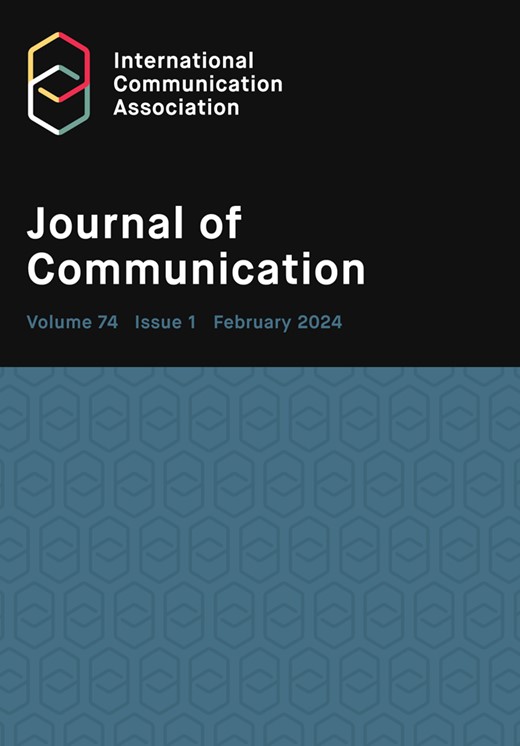The Impact of 5G Technology on Communication Infrastructure
IF 6.1
1区 文学
Q1 COMMUNICATION
引用次数: 0
Abstract
Purpose: The main objective of this study was to investigate the impact of 5G technology on communication infrastructure. Methodology: The study adopted a desktop research methodology. Desk research refers to secondary data or that which can be collected without fieldwork. Desk research is basically involved in collecting data from existing resources hence it is often considered a low cost technique as compared to field research, as the main cost is involved in executive’s time, telephone charges and directories. Thus, the study relied on already published studies, reports and statistics. This secondary data was easily accessed through the online journals and library. Findings: The findings revealed that there exists a contextual and methodological gap relating to the impact of 5G technology on communication infrastructure. Preliminary empirical review revealed that the significance of equitable access to 5G technology. As demonstrated, the adoption and impact of 5G can vary widely depending on factors such as geographic location, socioeconomic status, and cultural diversity. Bridging the digital divide and ensuring that underserved communities have access to advanced communication infrastructure remains a critical challenge. Policymakers, telecommunication companies, and community leaders must work collaboratively to address these disparities and ensure that the benefits of 5G are inclusive and accessible to all. Unique Contribution to Theory, Practice and Policy: The Diffusion of Innovations theory, Resource Dependency theory and the Structuration theory may be used to anchor future studies on 5G technology. The study emphasized the need for equitable expansion of 5G network coverage, particularly in underserved rural areas. Second, it calls for robust network security measures and data privacy regulations to safeguard user information. Third, the study promotes innovation and public-private partnerships to harness the full potential of 5G technology. Fourth, it highlights the importance of integrating 5G capabilities into disaster preparedness and response plans to enhance communication infrastructure resilience. Finally, the study stresses environmental sustainability by advocating for energy-efficient network components and eco-friendly deployment practices.5G 技术对通信基础设施的影响
目的:本研究的主要目的是调查 5G 技术对通信基础设施的影响。研究方法:本研究采用桌面研究方法。案头研究指的是二手数据或无需实地考察即可收集的数据。案头研究基本上是从现有资源中收集数据,因此,与实地研究相比,案头研究通常被认为是一种低成本技术,因为主要成本涉及执行人员的时间、电话费和目录。因此,本研究依赖于已出版的研究、报告和统计数据。这些二手数据可通过在线期刊和图书馆轻松获取。研究结果研究结果表明,在 5G 技术对通信基础设施的影响方面存在背景和方法上的差距。初步实证审查显示,公平获取 5G 技术具有重要意义。事实证明,5G 的采用和影响会因地理位置、社会经济地位和文化多样性等因素的不同而大相径庭。弥合数字鸿沟并确保服务不足的社区能够使用先进的通信基础设施仍然是一项严峻的挑战。政策制定者、电信公司和社区领袖必须通力合作,消除这些差距,确保所有人都能享受到 5G 的好处。对理论、实践和政策的独特贡献:创新扩散理论、资源依赖理论和结构化理论可用于今后有关 5G 技术的研究。研究强调了公平扩大 5G 网络覆盖的必要性,特别是在服务不足的农村地区。其次,研究呼吁采取强有力的网络安全措施和数据隐私法规来保护用户信息。第三,研究报告提倡创新和公私合作伙伴关系,以充分发挥 5G 技术的潜力。第四,它强调了将 5G 能力纳入备灾和救灾计划以增强通信基础设施复原力的重要性。最后,研究通过倡导节能网络组件和生态友好型部署实践,强调了环境的可持续性。
本文章由计算机程序翻译,如有差异,请以英文原文为准。
求助全文
约1分钟内获得全文
求助全文
来源期刊

Journal of Communication
COMMUNICATION-
CiteScore
11.60
自引率
5.10%
发文量
41
期刊介绍:
The Journal of Communication, the flagship journal of the International Communication Association, is a vital publication for communication specialists and policymakers alike. Focusing on communication research, practice, policy, and theory, it delivers the latest and most significant findings in communication studies. The journal also includes an extensive book review section and symposia of selected studies on current issues. JoC publishes top-quality scholarship on all aspects of communication, with a particular interest in research that transcends disciplinary and sub-field boundaries.
 求助内容:
求助内容: 应助结果提醒方式:
应助结果提醒方式:


